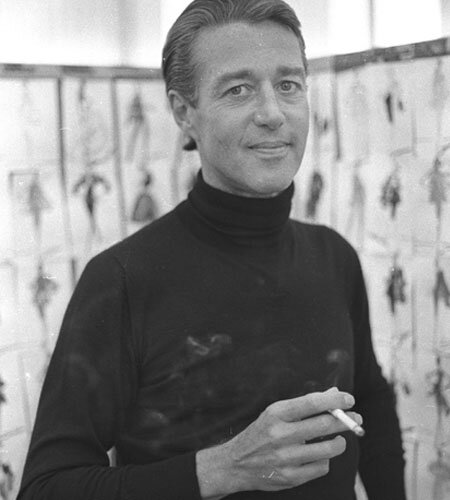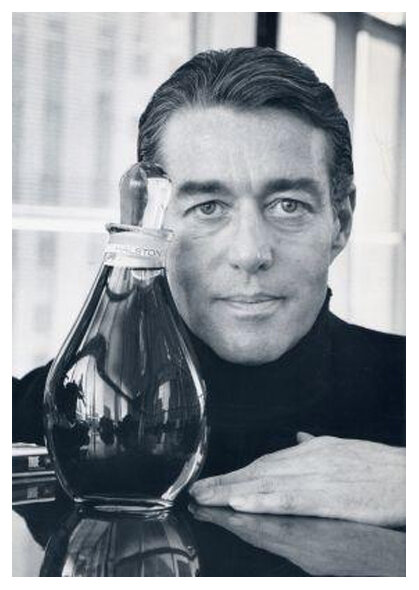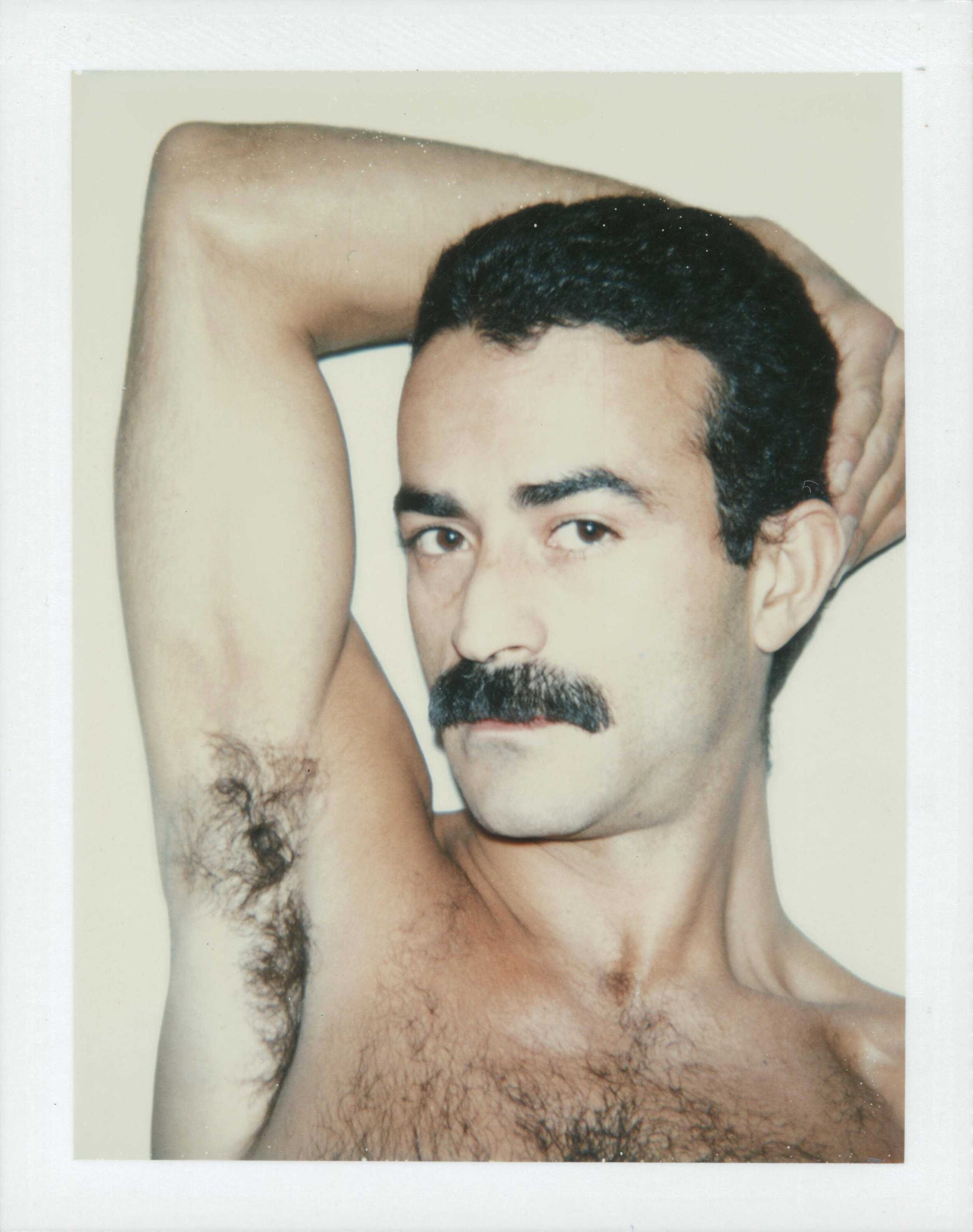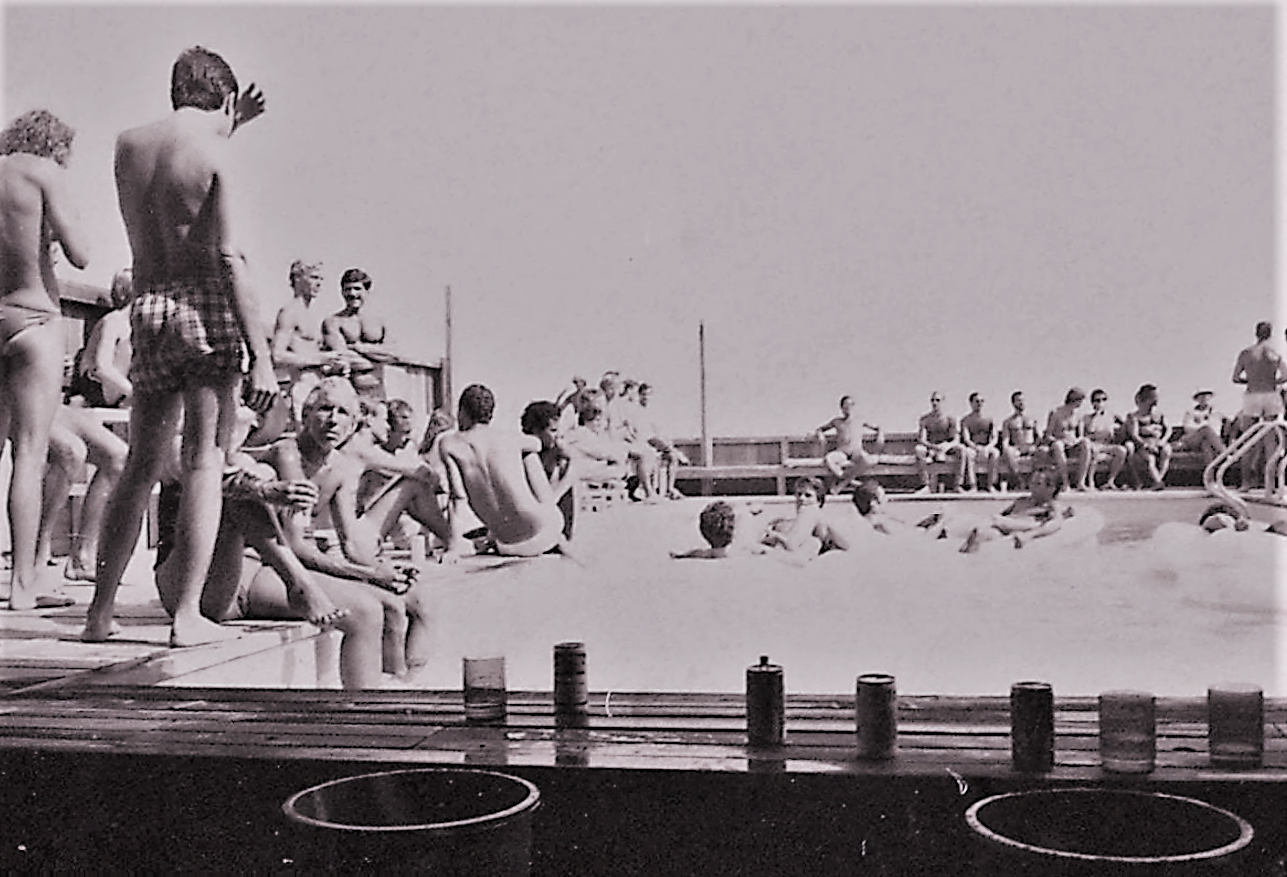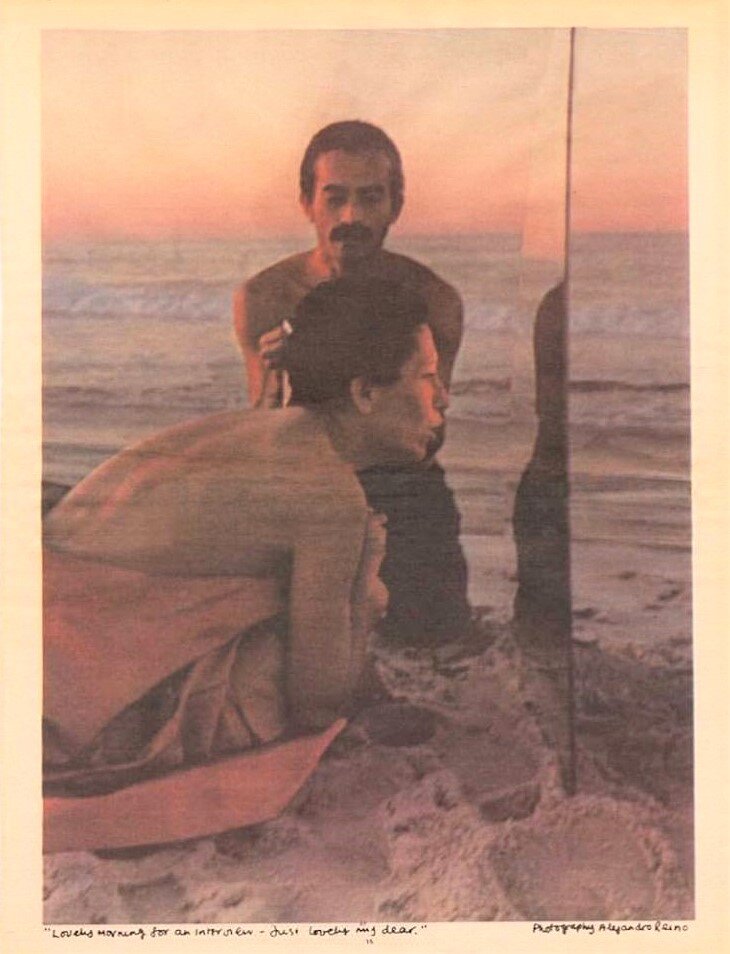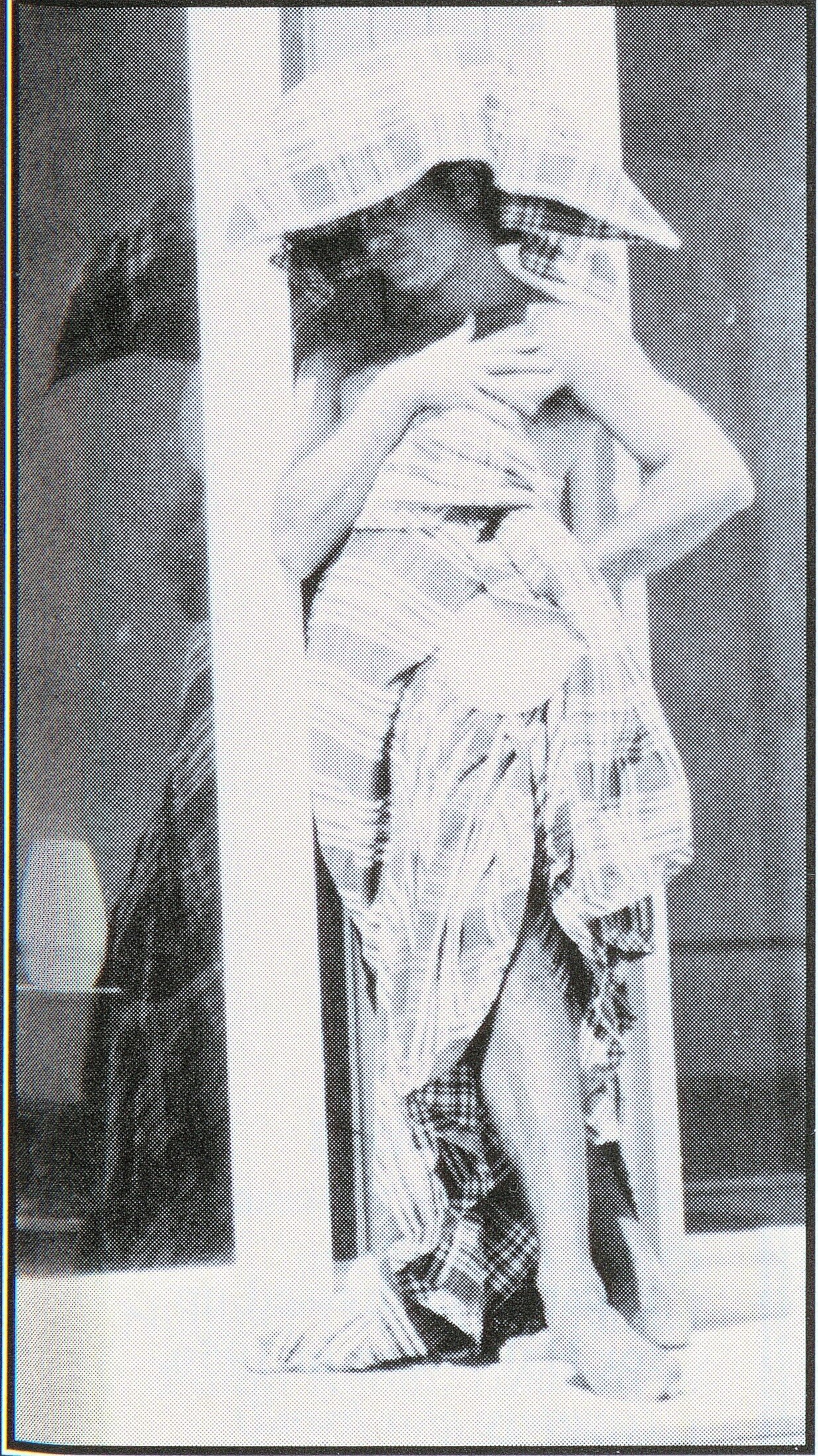Fire Island Celebrity history- Halston
Halston. 1932-1990.
Like many in the Fashion world Roy Halston Frowick, known simply as Halston found his way to the Pines. There he would meet the many people who would play a big role in both his personal and professional life. These included Angelo Donghia, Joel Schumacher, and Edward Austin…
In the summer of 1964, Fashion designer Halston found romance, of a sort. He was at tea dance, the late-afternoon ritual at the bay-front Botel in the Fire Island Pines where residents gathered for dancing and cocktails, posing and staring, when he saw a handsome, well-built young black man talking with friends. After studying the boy for a few minutes, he sent a waiter to say that an admirer wanted to buy him a drink. “I don’t accept drinks from strangers,” twenty-four-year-old Edward J. Austin Jr. told the waiter grandly. But he added, “Send a drink back from me to whoever sent it.” Later, when tea dance was over and Austin was headed back to his friends’ house, he noticed a tall, handsome man waiting at the end of the dock under a lamppost, smoking a cigarette. The man smiled and motioned Austin over. “I still didn’t know who he was,” said Austin. “He told me his name was Eric. I met him on a Saturday and he invited me to his house on Monday. Later I saw my friends and they said, ‘His name isn’t Eric, it’s Halston—you know, the designer from Bergdorf Goodman.’ That started the relationship.”
Halston’s personal life was rather bleak. Since his sexual relationship with Ed Austin had trailed off, Halston had taken to phoning call boys, who would come to the East Fifty-fifth Street apartment, where he would perhaps order them both a steak and a baked potato delivered up, then take them to bed and show them the door. Joe Eula, the fashion illustrator and one of Halston’s closest confidants, took to calling this practice “dial-a-steak, dial-a-dick,” which Halston thought was hysterically funny. One night in 1972, the young man who showed up at Halston’s apartment from the call-boy service changed his life. The man’s name, improbably, was Victor Hugo—a professional name and a pun, it would turn out, on his “huge-o” endowment. Victor was brilliant, zany, exciting, and dangerous. Because of him, Halston would thereafter live his life on the edge—on the edge of legality, of propriety, and of sanity. “Halston and I never had sex after the first three months,” said Hugo.
Victor Hugo
“It was a great love affair—not about sex.” “The person that Halston loved, more than his own life, was Victor,” said Peruchio Valls, who had known Hugo since he was a boy and who later became one of Halston’s personal assistants.
Halston & Joe Eula
Victor Hugo was a handsome twenty-four-year-old student from Caracas, Venezuela, and the first of Halston’s lovers to actually move in and live with him. Halston also put Victor on the company payroll and gave him a job in the packing room. It didn’t take long to discover that Victor wasn’t cut out for menial tasks. Clearly, the logical outlet for Victor’s artistic bent was to dress the windows of Halston’s boutique, but that encroached on Ed Austin’s area of pride and joy. Austin now managed Halston’s boutique and dressed the windows. By Christmas of 1973 it came to a head. “We had a big fight about the Christmas window,” Austin said. “I put in the window about a week before Christmas. It was fabulous, nothing but red clothing and silver jewelry. But Halston came downstairs with Victor Hugo, and he didn’t like it. Halston had Victor redecorate it. I was in my office, and somebody came up and told me what was happening. I put on my fur coat—a beautiful raccoon coat that Halston had given to me—I had a very stiff drink and went home.” When Austin returned to work on Monday, Halston stormed into his office. “He was furious,” said Austin, “and he told me, ‘I want the keys to the boutique. I want my keys—just give me the keys.’ Well, it was Christmas Eve, I had packages all over the place, I had a limousine outside waiting to carry me home with all these packages, and I was fired. Christmas Eve, thank you—out the door, no severance, nothing.” Ed Austin never saw Halston again.
Ed Austin
Writer Bob Collacello:
On the ferry in 1979 to Fire Island with Andy Warhol and Rupert Smith, one of the printers who made Warhol’s silk screens. “We had just published a book of photos called Andy Warhol’s Exposures, and Steve Rubell was giving a lunch for us at the house in Fire Island Pines that he shared with Halston,” Colacello recalled. “Well, there were about a hundred boys in Speedos and Victor Hugo in a jockstrap, and everybody was taking quaaludes—not Andy or me. Our chauffeur disappeared with one of the partygoers.”
Photo by Christopher Makos
Photograph by Christopher Makos, Interview, February 1978; photograph by Marina Schiano, Interview, August 1979.
The party below with Halston, Andy Warhol, Steve Rubell, and more…
Victor Hugo and Jewelery designer/ model Elsa Peretti on Fire Island below.
Victor Hugo and Elsa Peretti photo Alejandro Reino
Simply Halston
Supposed Halston in drag motif in Fire Island Pines from the Book “Simply Halston” by Steven Gaines..
Halston and Victor Hugo
The Sarong
was inspired by weekends at Fire Island. Halston designed numerous versions of his sarong essentially with one tie to undo at the end of the evening “et voila”. This gold lame Sarong from 1975 is exquisite.
1990. NY Times Obituaries:
Halston, Symbol of Fashion In America in 70’s, Dies at 57
By BERNADINE MORRIS
Published: March 28, 1990
Halston, the designer who personified American fashion in the 1970’s, died of complications from AIDS Monday night at Pacific Presbyterian Hospital in San Francisco. He was 57 years old and had lived in New York before moving to San Francisco earlier this year. For a time early in 1970’s, it seemed that every fashionable woman in the country wore clothes by Halston. At his fashion shows, the presence of celebrities like Liza Minnelli, Elizabeth Taylor, Martha Graham, Bianca Jagger and Candice Bergen gave the introduction of his collections an extra frisson of excitement. Because of his talent for stylish presentations, Andy Warhol, a frequent guest and close friend, called Halston’s fashion shows ”the art form of the 70’s.” Halston had the strongest influence in fashion early in the decade, when he helped bury the wild, anti-establishment look of the 60’s, with its gypsy colors, fringed leathers and tie-dyed fabrics. He introduced the more sober clothes that women were ready for. The revolution was over. ”Do you see that?” he asked, peeking through a curtain at the audience dressed in long peasant skirts and jangling jewelry before he showed his fall collection in 1971. ”That is all finished – we’re on to something different.”
First Client: Fran Allison
That was the collection in which he revived knitted cashmere in sweater sets that had been an American institution 20 years earlier, as well as in trousers and skirts. He tied the cardigan around the neck or hips in the traditional schoolboy gesture that was then adopted by women in fashion. He also introduced the knitted cape stole that was revived for the fall of 1989 by major American designers like Calvin Klein and Ralph Lauren.
Halston was born Roy Halston Frowick in Des Moines on April 23, 1932. He went to school all over the Midwest, ending up in Evansville, Ind. After attending Indiana University and the Art Institute of Chicago, he opened a millinery shop in the Ambassador Hotel in Chicago in the 1950’s. His first client was Fran Allison of the ”Kukla, Fran and Ollie” television show. A fashion article in a local newspaper brought him instant success, and within months he was making hats for celebrities, including Kim Novak, Hedda Hopper, Deborah Kerr and Shirley Booth. Smooth, urbane and considerate, the tall, slender designer was from the beginning of his career a favorite of fashion editors and theater people. In 1957, at the age of 25, he came to New York and called on Lilly Dache, then a prominent milliner, whom he had met in Chicago. She gave him a job. A year later he moved to Bergdorf Goodman, where he worked with what he called ”an incredible clientele,” and traveled to Europe with the store’s buyers. He saw the shows of the leading Paris couture designers, including his favorite, Cristobal Balenciaga. Halston made the pillbox hat that Jacqueline Kennedy wore when her husband was inaugurated President.
Couture and Ready-to-Wear
That was not enough to revive the vanishing millinery business as women everywhere discarded hats in favor of bouffant hair. In 1966 Bergdorf introduced the first clothes collection by Halston, which was supposed to bridge the gap between couture and ready-to-wear. The collection was planned to look younger than traditional made-to-order clothes and better made than ready-to-wear. Two years later Halston established his own company to make couture clothes and in 1972 added a boutique or ready-to-wear division in his salon at 813 Madison Avenue. A few months later he started Halston Originals at 550 Seventh Avenue to sell to department stores all over the country. His first big success was the classic shirtdress in Ultrasuede, an imitation leather material made in Japan that the designer referred to as ”leatherette.” He boasted that it could be washed in a machine. About 50,000 shirtwaist dresses were sold, and Ultrasuede became for many years a fashion staple. Halston’s quiet, well-bred clothes included both smartly tailored suits and traditional chiffon and crepe evening dresses. Their acceptance helped raise the standing of American designs on the world fashion stage.
In 1973, soon after his company was acquired by Norton Simon, Halston was one of five American designers invited to present their clothes, along with five French couturiers, at a benefit at Versailles. The vitality and freshness of the American clothes – the other designers were Anne Klein, Stephen Burrows, Bill Blass and Oscar de la Renta – looked far more contemporary than the seriously elegant clothes by Hubert de Givenchy, Yves Saint Laurent, Emanuel Ungaro, Pierre Cardin and Marc Bohan of Christian Dior.
Designed Theatrical Costumes
Halston began expanding his design activities to include furs, luggage, cosmetics, perfume, sheets, raincoats, carpets and handbags, for a total of 30 fashion-related items by the end of the decade. Everything with which he was connected seemed to click, including jewelry by Elsa Peretti that he showed with his clothes. Miss Peretti also helped design Halston fragrance bottles.
He later entered theatrical design, doing costumes for several ballets by Martha Graham, incluing ”Clytemnestra,” and the costumes for Liza Minnelli’s Broadway show ”The Act.” In 1978 Halston moved his offices, workrooms and custom salon to the 21st floor of the Olympic Tower. With the spires of St. Patrick’s Cathedral towering behind his desk and a red carpet woven with double H’s, it was a setting fit for a superstar. Halston also changed his work habits. Instead of arriving at his office at 8 A.M. and staying until midnight, he would stay at Studio 54 until 4 or 5 A.M. and arrive at work around noon.
Wanted to Dress America
After he signed an agreement with J. C. Penney in 1982 to design lower-priced clothes, his business began to disintegrate. Halston said the Penney deal gave him a chance to dress America. His associates said that he had taken on too much and that he should at least have hired more people to help him design. Bergdorf Goodman, the store that gave him his start more than a quarter century earlier, dropped his collection because of the Penney connection. Norton Simon was taken over by Esmark, a conglomerate that sold food and underwear. Within a year Esmark was acquired by the Beatrice Companies, another conglomerate. Halston unsuccessfully tried to buy back his business in October 1984. Soon after, Beatrice spun off Halston Enterprises, including Halston fragrances, which were acquired in December 1986 by the Revlon Group.
In January, Halston sold his East Side Manhattan townhouse, his residence for most of the last 15 years, for $5 million and moved to California to be near his family. The designer is survived by a sister, Sue Watkins, and two brothers, Donald Edward Frowick and Robert Holmes Frowick. All three live in Santa Rosa, Calif.
”Halston asked me to auction the 1989 Rolls-Royce he purchased last year, with the proceeds to go to AIDS research,” Robert Frowick said.
2019. New Documentary.





